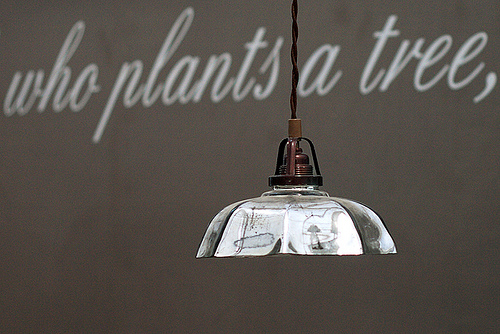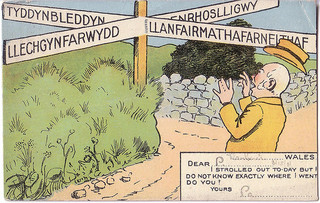3. Relative clauses
 |
| Imagen de Fredrik Elofsson en Flickr bajo licencia CC |

|
RELATIVE CLAUSES |
||||||||||||||||||||||||||||||||||
|
1. Introduction When you mention someone or something in a sentence, you often want to give further information about them. One way to do this is to use a relative clause. You put a relative clause immediately after the noun which refers to the person, thing, or group you are talking about. Examples: The man who came into the room was small and slender. Opposite is St. Paul’s Church, where you can hear some lovely music. Relative clauses have a similar function to adjectives, and they are sometimes called adjectival clauses. Nominal relative clauses, which have a similar function to noun groups, are explained later on. 2. Relative pronouns Many relative clauses begin with a relative pronoun. The relative pronoun usually acts as the subject or object of the verb in the relative clause. Examples: He is the only person who might be able to help. Most of the mothers have a job, which they take both for the money and the company. Relative pronouns do not have masculine, feminine, or plural forms. The same pronoun can be used to refer to a man, a woman, or a group of people. Examples: She didn’t recognize the man who had spoken. I met a girl who knew Mrs Townsend. There are many people who find this intolerable. Some relative clauses do not have a relative pronoun. Example: Nearly all the people I used to know have gone. 3. Relative pronouns chart Variations may be encountered in the spoken and informal English, but the most common distribution of the relative pronouns is as follows:
4. Kinds of relative clause There are two kinds of relative clause: defining and non-defining relative clauses. Defining relative clauses explain which person or thing you are talking about. For example, if you say “I met the woman”, it might not be clear who you mean, so you might say, “I met the woman who lives next door”. In this sentence, “who lives next door” is a defining relative clause. Shortly after the shooting, the man who had done it was arrested. Mooresville is the town that John Dillinger came from.
Non-defining relative clauses give further information which is not needed to identify the person, thing, or group you are talking about. For example, if you say “I saw Madonna”, it is clear who you mean. But you might want to add more information about Madonna, so you might say, for example, “I saw Madonna, who was staying at the hotel opposite”. In this sentence, “who was staying at the hotel opposite” is a non-defining relative clause. Non-defining relative clauses are used mainly in writing rather than speech. 5. Punctuation A non-defining relative clause usually has a comma in front of it and a comma after it, unless it is at the end of a sentence, in which case you just put a full stop. Example: Sir Denis, who is 78, has left his collection to the nation.
6. Human or non-human antecedents Who and its derivatives are generally restricted to human antecedents, while which and what and their derivatives refer in most cases to things, including animals. The relative pronoun that is used with both human and non-human antecedents. The possessive form whose is necessarily used with non-human as well as human antecedents because no possessive forms exist for which or that. Otherwise, to avoid using whose with non-human antecedents, a periphrastic structure would be required. Example: "...the car the engine of which blew up", or "...the car of which the engine blew up" instead of "...the car whose engine blew up..".
7. Zero relative pronoun English, unlike other West Germanic languages, has a zero relative pronoun (denoted below as Ø)—that is, the relative pronoun is implied and not explicitly written or spoken. This measure is only used in defining relative clauses as an alternative to that, which or who, whom, etc. in clauses such as: Jack built the house that I was born in; Jack built the house Ø I was born in; He is the person who I saw; ... the person whom I saw; He is the person Ø I saw. The zero relative pronoun cannot be the subject of the verb in the relative clause; that is, that or who, etc., cannot be omitted if they function as a subject. For example: Jack built the house that sits on the hill She is the one who encouraged me Neither the zero pronoun nor that can be used in non-defining relative clauses (that is, yes: "Jack, who builds houses, built the house she lives in", but never: "Jack, that builds houses, built … "), nor in any relative clause with a fronted preposition (yes: "Jack built the house in which we live", but never: "Jack built the house in that we live"). But either can be used when the preposition is at the end of the sentence, ("Jack built the house that we live in," or "Jack built the house we live in.") 8. Relative pronoun as the object of a preposition A relative pronoun often appears as the object of a preposition. For formal writing or speech any relative pronoun serving as an object must be one that 'takes' the objective case, for example, whom, whose, or which, but usually not who and never that—both who and that usually take the subjective case. For example: Jack is the boy with whom Jenny fell in love (formal); Jack built the house in which I was raised (formal).
Adapted from: http://en.wikipedia.org/wiki/English_relative_clauses Adapted from: http://en.wikipedia.org/wiki/Who_%28pronoun%29#Usage_of_whom Adapted from: English Grammar, Ed. COBUILD Collins, 1998 |
||||||||||||||||||||||||||||||||||
Importante
This video focuses on complex sentences with relative pronouns and reviews the rules for punctuation in these sentences with examples:
The following video is a summary on relative pronouns in relative clauses:
Actividad desplegable
Fill in the gaps with the suitable relative pronoun. Use "that" only once.
Pregunta de Elección Múltiple
Reflexión
Make one sentence from the two short ones. The relative pronoun is the subject of the relative clause. Click on "pulse aquí" to check your answers.
- She worked for a man (the man used to be an athlete)
- They called a lawyer (the lawyer lived nearby)
- I sent an email to my brother (my brother lives in Australia)
- The customer liked the waitress (the waitress was very friendly)
- We broke the computer (the computer belonged to my father)
- I dropped a glass (the glass was new)
- She loves books (the books have happy endings)
- They live in a city (the city is in the north of England)
- The man is in the garden (the man is wearing a blue jumper)
- The girl works in a bank (the girl is from India)
Adapted from: http://www.perfect-english-grammar.com/relative-clauses-exercise-1.html
Reflexión
Make a new sentence by joining the two short sentences. Use the relative pronoun "that", "who", "which" or no pronoun. Click on "pulse aquí" to check your answers.
- We ate the fruit. I bought the fruit.
- She bought the computer. Her brother had recommended the computer.
- He lost the money. I had given him the money.
- We called the taxi company. Julie often uses the taxi company.
- John met a girl. I used to employ the girl.
- Lucy called the doctor. My mother knows the doctor.
- He brought a woman. I used to often meet the woman .
- We employed the lawyer. Julie recommended the lawyer.
- The fruit is on the table. I bought the fruit.
- The wallet belongs to John. Lucy found the wallet in the garden.
Adapted from: http://www.perfect-english-grammar.com/relative-clauses-exercise-2.html
Reflexión
Make one sentence by changing the sentence in italics into a defining relative clause. The relative pronoun can be the subject or the object of the relative clause. Click on "pulse aquí" to check your answers"
- They found the money. I dropped the money.
- I broke the plate. The plate was a wedding present.
- The police arrested the man. I saw the man steal a handbag.
- The Queen fired the chef. We had met the chef.
- She wrote to her friend. Her friend lives in Vietnam.
- Jill ate the sandwich. The sandwich had tomato and cheese inside.
- His friend lives in Scotland. His friend is a lawyer.
- We called the secretary. I went to school with the secretary.
- The CD is in my bag. The CD has Spanish music.
- The book is very interesting. The book is about Japanese culture.
Adapted from: http://www.perfect-english-grammar.com/relative-clauses-exercise-3.html
Para saber más
If you need more practise on relative clauses, click on the following links to have access to plenty of activities related to them:
Curiosidad
|
Imagen de Carl Morris en Flickr bajo licencia CC |
The Welsh language is probably the most important thing that distinguishes Wales from the rest of the UK. Welsh (or Cymraeg) is one of Europe's oldest languages and is spoken by one in five Welsh people. This number doubles among children and teenagers which shows that the language is very much alive among the young. Road signs and other signs are in both English and Welsh. The language is at its strongest along the Llyn Peninsula in North-West Wales, where 75 per cent of the population speak Welsh. Towns, villages and cities in Wales often have both a Welsh and an English name and Wales is home to one of the longest place names in the world - Llanfairpwllgwyngyllgogerychwyrndrobwllllantysiliogogogoch which means St Mary's (Church) by the white aspen over the whirlpool, and St Tysilio's (Church) by the red cave! Source: http://www.teachingenglish.org.uk/sites/teacheng/files/destinationwales-lesson-plan.pdf |
